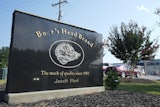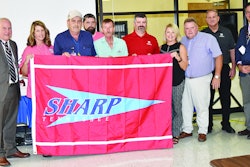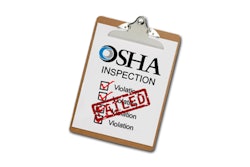With 2017 in the rearview mirror, food and beverage manufacturers should take stock of opportunities and challenges facing their organizations and the industry in the New Year.
According to Mintel’s 2018 Global Food & Drink Trends report, “widespread distrust has increased the need for food and drink manufacturers to be forthcoming about their ingredients, production processes, and supply chains.” The growing consumer demand for improved traceability and transparency will undoubtedly influence positive and immediate changes.
Advancements in track and trace technology, paired with greater access to food quality data, leaves manufacturers with little room for excuses. Here are a few ways food and beverage manufacturers can keep their resolutions to improve product safety practices and maintain consumer trust.
Create a Culture Where Quality and Safety Are Top of Mind
In 2017, I wrote an article for Food Manufacturing highlighting how food and beverage manufacturers can use technology and data insights to identify and fix broken processes and create a more productive shop floor culture. The same sentiments can be applied to fostering a culture where food and beverage safety is a priority.
In 2018, your resolution should be to utilize your Enterprise Resource Planning (ERP) solution to audit your processing and packaging methods to ensure your team and your suppliers are handling food and beverage products with care and complying with regulatory mandates.
Meet with your team to review your audit findings and discuss any necessary changes. More importantly, detail why changes are needed and help your team understand the importance of their roles in delivering high-quality products and keeping consumers safe.
Prepare your team with published recall procedures and run "practice recalls" using your ERP system to further establish a way of working where awareness, accuracy and quick response become second nature. In the event of a recall, having practiced what to do in similar scenarios will ultimately enable you and your team to take proper actions faster, minimizing risk to your company and the brand while minimizing or eliminating confusion and negative effects on consumers.
Avoid Costly Recalls with Proper Track and Trace Resources
While the number of FDA food recalls declined 11 percent in Q3 2017, the number of recalled food units increased 19 percent. More than 95 percent of those units were considered Class 1, defined by the FDA as “a situation in which there is a reasonable probability that the use of or exposure to a violative product will cause serious adverse health consequences or death.”
Undeclared allergens were the leading cause of recalls. An ERP engineered for food and beverage manufacturers can reduce and eliminate such errors by preventing creation of recipes with undeclared allergens as well as preventing operational substitutions with undeclared allergens.
To ensure the accuracy of your data, utilize an ERP system with allergen controls and advanced track and trace capabilities built in. Undoubtedly this is a key area to look at in the interest of keeping compliant with the Food Safety Modernization Act, and ultimately keeping your commitment to delivering safe, high-quality products to consumers.
Use Analytics to Build a Better, Smarter Supply Chain
Producing less waste, employing less labor and operating equipment more efficiently are examples of incremental improvements that yield big results. But the challenge is how to determine areas for improvement. Without access to analytical information, it can be difficult to establish a baseline, much less identify what changes need to be made. The ability to turn data into actionable insight is a key differentiator between industry leaders and all others.
While I’ve stressed the importance of using data to react quickly to issues, more food and beverage manufacturers should be proactive about incorporating data throughout all of their decision-making. Applying business intelligence from actionable data can lead to continuous improvement. Better usage of data for decision-making allows leaders in the food and beverage industry to outperform corporate expectations by as much as 15 percent, as well as lowering costs and improving productivity.
Think through how your organization can utilize its technology and data in the same fashion. What Key Performance Indicators should you be tracking to enhance operations and the customer experience?
Time for Change
Calls from consumers for more transparency in food and beverage manufacturing processes will only continue to get louder. As you reflect on the previous year and how your organization performed, now is the time to consider if your systems meet regulatory standards. Are you minimizing liability to the company and the brand by proactively preventing recalls? Can you easily and quickly contain a recall in the unfortunate event one occurs?
When you focus on establishing a culture where product safety takes precedence, and you’re using technology like an integrated ERP solution designed for food and beverage manufacturers to avoid mistakes and plan ahead, you’ll stay on the right side of consumer opinion this year and in years to come.
Jack Payne is VP, Product Management & Solutions Consulting for Aptean






















